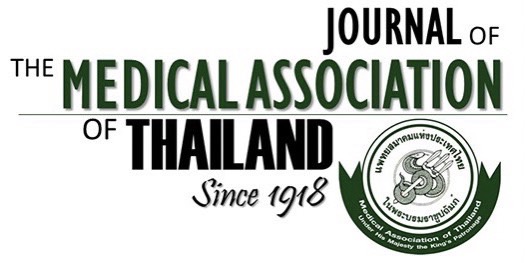Risk Factors of Intraoperative Oxygen Desaturation: A Case-Control Study of 152,314 Anesthetics
Somrat Charuluxananan MD, FRCAT*, Suwanee Suraseranivongse MD, FRCAT**, Yodying Punjasawadwong MD, FRCAT***, Wanna Somboonviboon MD, FRCAT*, Surirat Sriswasdi MD, FRCAT****, Tharnthip Pranootnarabhal MD, FRCAT****, Thavat Chanchayanon MD, FRCAT*****, Waraporn Chau-in MD, FRCAT******, Nirun Intarut MPH*******
Affiliation : * Department of Anesthesiology, Faculty of Medicine, Chulalongkorn University, Bangkok ** Department of Anesthesiology, Siriraj Hospital, Mahidol University, Bangkok *** Department of Anesthesiology, Ching Mai University, Chiang Mai **** Department of Anesthesiology, Ramathibodi Hospital, Mahidol University, Bangkok ***** Prince of Songkla University, Songkhla ****** Khon Kaen University, Khon Kaen ******* Clinical Epidemiology Unit, Faculty of Medicine, Chulalongkorn University, Bangkok
Background : The present study was part of the Thai Anesthesia Incidents Study (THAI Study) of anesthetic
adverse outcomes.
Objective : To determine factors related to intraoperative oxygen desaturation (SpO2 < 85% or < 90% for more
than 3 min)
Materials and Methods : During a 12-month period (February 1, 2003 - January 31, 2004), a prospective
multicentered registry of patients receiving anesthesia was conducted in 20 hospitals across Thailand.
Anesthesia personnel filled up patient-related, surgical-related, and anesthesia related variables and
adverse outcomes including intraoperative oxygen desaturation. A case-control (1:4) study of patients with
and without intraoperative oxygen desaturation in the THAI Study database was done. Univariate and
multivariate analysis were used to identify factors related to intraoperative oxygen desaturation. A p-value
< 0.05 was considered as significant.
Results : Among 152,314 patients without preanesthetic desaturation in the database, 328 cases of intra-
operative oxygen desaturation were matched with 1,312 control patients without desaturation. Variables
that predict desaturation by multiple logistic regression were age less than 5 years old [OR 9.3 (95% CI 5.4-
16.0)], ASA physical status 3, 4, 5 [OR 3.1 (95% CI 2.2-4.3)], history of upper respiratory tract infection [OR
10 (95% CI 1.9-51.6)], history of asthma [OR 2.9 (95% CI 1.0-9.5)], general anesthesia [OR 4.0 (95% CI 2.4-
6.7)] duration of anesthesia 31-90 min [OR 1.9 (95% CI 1.2-3.0)], duration of anesthesia 91-150 min (OR 2.2
(95% CI 1.3-3.6)], and duration of anesthesia > 150 min [OR 2.0 (95% CI 1.2-3.4)].
Conclusion : Knowing the risk factors of intraoperative oxygen desaturation helps improving personnel to
improve preanesthetic conditions and facilitate early detection as well as prompt treatment of intraoperative
oxygen desaturation.
Keywords : Anesthesia, Desaturation, Complication, Adverse events, Risk factors, Case-control



